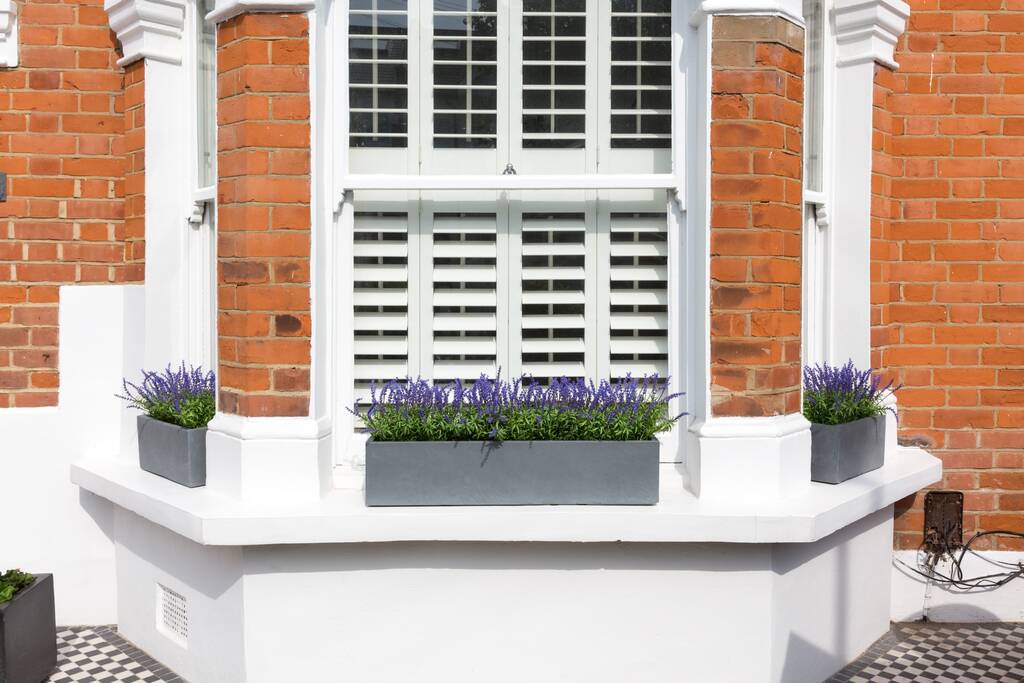With its beautiful flowers and fragrant scent, lavender is a wonderful choice for a window box herb garden This aromatic plant can thrive in an outdoor container with proper care Follow these tips for growing healthy, abundant lavender in a window box planter.
Choosing the Right Lavender Variety
Not all lavenders are created equal when it comes to growing conditions. To flourish in a window box, choose a variety suited for container life:
-
English lavender (Lavandula angustifolia) – One of the most popular kinds. Handles confinement well.
-
Spanish lavender (Lavandula stoechas) – Neat, compact growth habit Tolerates some drought.
-
French lavender (Lavandula dentata) – Low-growing cushions good for edges.
-
Lavandin (Lavandula x intermedia) – A sterile hybrid that won’t self-seed.
-
Dwarf varieties like ‘Munstead’ and ‘Hidcote Blue’ – Bred for pot culture.
Providing the Right Conditions
Lavender thrives best in full sun well-drained soil and moderate temperatures. Create these conditions for container plants
-
Place the window box in a south-facing location receiving at least 6 hours of direct sunlight daily.
-
Add gravel, sand, perlite, or vermiculite to regular potting mix to improve drainage.
-
Consider horticulture charcoal to absorb excess moisture.
-
Water only when the top inch of soil is dry to the touch. Let drain fully after watering.
-
Move container to a sheltered spot or indoors if temperatures drop below 20°F.
Feeding and Pruning Lavender in Containers
Proper fertilization and pruning helps keep lavender healthy in window boxes:
-
Use a balanced organic fertilizer every 2-3 weeks during spring and summer. Too much nitrogen causes leggy growth.
-
Prune lightly in spring, cutting 1-2 inches above old wood to shape plants. Don’t cut into woody portions.
-
After flowering finishes, prune more aggressively, cutting back up to 1/3 of plant height. This promotes bushy regrowth.
-
Remove spent flower stems during the growing season to encourage new blooms.
Overwintering Lavender Indoors
Lavender grown in pots can be overwintered indoors in a sunny window until spring:
-
Prune plants by 1/3 and move containers inside before frost. Provide lots of light.
-
Water sparingly, allowing the potting mix to partially dry out between waterings.
-
Keep indoor temperatures cool, around 55°F, for a proper dormancy period.
-
Check for pests like whiteflies that can infest indoor plants and treat if found.
-
Transition back outside after the danger of frost when air and soil temperatures warm.
Troubleshooting Common Lavender Problems
Here are some fixes for potential issues growing lavender in window boxes:
-
Poor drainage causes root rot – Repot in a mix with more sand/gravel to improve drainage.
-
Leggy growth means too much shade – Move container to the sunniest location possible.
-
Flowering decreases due to age – Replace with younger plants every 3-4 years.
-
Spider mites cause speckling – Use a strong spray of water to dislodge mites. Apply neem oil weekly.
-
Plants decline from overwatering – Allow more drying time between waterings. Add more sand to potting mix.
Enjoying the Benefits of Lavender
One of the joys of cultivating lavender in a container is getting to appreciate its beauty and fragrance up close. As the plants flower, run your fingers along the aromatic foliage and blossoms. Clip sprigs to place around your home, infuse in oils, or use for crafts. Just brushing against lavender in a window box as you pass by can provide instant stress relief through its calming scent.
With proper variety selection, care, and overwintering, it’s possible to nurture lavender in containers year after year. The extra effort is rewarded by the pleasant perk of having this Mediterranean herb’s sweet perfume right at your window through the seasons.
What Would You like to Learn About Today?
With its mesmerizing scent and stunning blooms, lavender (or Lavandula) has been cherished for centuries as a versatile herb for its therapeutic qualities and ornamental appeal. Whether you seek a fragrant oasis to soothe your senses, a vibrant addition to your garden, or even a resource for homemade crafts and culinary delights, lavender is a perfect choice.
Follow this simple guide to start growing lavender flowers in pots or containers!

Should you prune potted lavender?
Pruning your potted lavender annually improves flowering and helps keep it compact in its container. As soon as the big buds start to show up in early spring, you should cut back your lavender about a third of the way down the plant. If you prune later in the season, don’t cut back to the woody growth. Instead, cut back to the soft growth about 2 to 3 inches above it. Without pruning, lavender can grow lanky, woody, and split open. Learn more about pruning lavender HERE.
Lavender and window box
FAQ
Will lavender grow in window boxes?
How do you care for a lavender window box?
Does lavender grow better in pots or ground?
How to plant lavender in a planter box?
- The Ultimate Guide to Growing Strawberries in Raised Beds - August 8, 2025
- No-Dig Garden Beds: The Easiest Way to Grow a Beautiful Garden - August 6, 2025
- How to Protect and Preserve Wood for Raised Garden Beds - August 6, 2025

